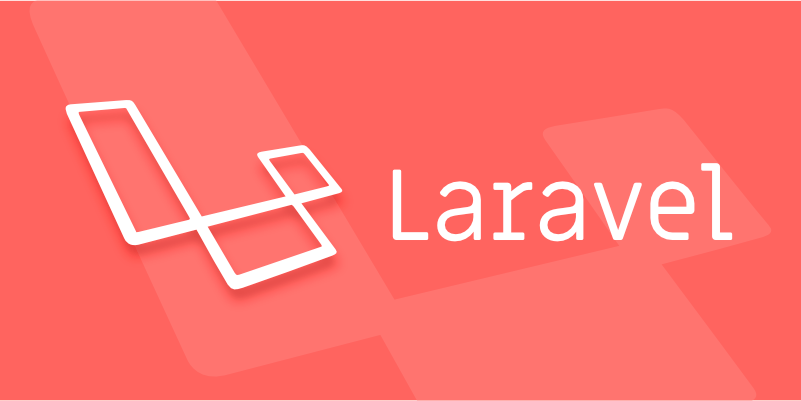.env files are used to store variables in Laravel projects that change with the environment, such as database information and API keys, to avoid hard coding. 1. The .env file is located in the root directory of the project and is generated through cp .env.example .env. After modification, you need to run php artisan config:clear to make it take effect; 2. It is recommended to use the config() function to read the configuration instead of directly using env() to improve performance; 3. Adding custom variables requires declaration in .env and creating the corresponding configuration file to refer to the variable; 4. Notes include: not submitting .env to Git, using different .env files in different environments, not frequently calling env() in controllers or templates, and server environment variables need to be directly set in some deployment environments.

Configuring environment variables and .env files in Laravel projects is not complicated, but it is easy to get confused for beginners. The key is to understand the role of .env files and how to correctly use config() and env() functions to read values.

1. What does .env file do?
Laravel uses .env files to store project environment variables, such as database connection information, API keys, application keys, etc. This information will usually vary according to different deployment environments (local development, testing, production), and can be placed in .env files to avoid hard-coded in the code.

You can find the .env file in the project root directory. If you have just installed Laravel, this file exists by default, and you can also generate it through the command:
cp.env.example.env php artisan key:generate
The content inside looks like this:

APP_NAME=Laravel APP_ENV=local APP_KEY=base64:xxx APP_DEBUG=true DB_HOST=127.0.0.1 DB_PORT=3306 DB_DATABASE=homestead DB_USERNAME=homestead DB_PASSWORD=secret
Remember to run after modifying .env :
php artisan config:clear
Otherwise the new variable may not take effect.
2. How to read variables in .env ?
Laravel provides two main ways to access environment variables:
-
env('KEY'): Read values ??directly from.envfiles. -
config('app.key'): Read from configuration files, which generally refer to the value of.env.
For example, in config/app.php you will see configuration items like this:
'key' => env('APP_KEY', 'fallback_value'),
Therefore, the recommended approach is: use config() to obtain variables first, rather than use env() directly , because this is more conducive to cache configuration and improve performance.
Tip: Do not use
env()frequently in controllers or Blade templates, as it will cause the configuration to be uncachedable.
3. How to add custom environment variables?
If you want to add your own variables, such as a token for a third-party API, you can do this:
Add a line to the
.envfile:MY_API_TOKEN=your-secret-token-here
Create a custom configuration file, such as
config/myconfig.php:Return [ 'api_token' => env('MY_API_TOKEN'), ];Then in the code you can use it like this:
$token = config('myconfig.api_token');
This method is not only clear in structure, but also convenient for unified management.
4. Frequently Asked Questions and Precautions
.envfiles should not be submitted to Git
It usually contains sensitive information and should be added to.gitignore. When collaborating with teams, you can use.env.exampleas a template.Different environments need to use different
.envfiles
For example, the database account passwords of local development and online servers are definitely different.Don't treat
.envas a global variable pool
It is better to only place configuration items that need to distinguish the environment. Other common settings are written inconfig/file.Some services require you to set real environment variables on the server
For example, when deploying Forge or Envoyer, they suggest you set environment variables directly on the server instead of relying on.envfiles.
Basically that's it. Configuring
.envand environment variables is not difficult, but details are easy to ignore, especially the caching mechanism and calling methods. Just remember to "encapsulate.envwith configuration and don't useenv()randomly", and you will basically not make any mistakes.The above is the detailed content of Setting up Environment Variables and .env File in Laravel?. For more information, please follow other related articles on the PHP Chinese website!

Hot AI Tools

Undress AI Tool
Undress images for free

Undresser.AI Undress
AI-powered app for creating realistic nude photos

AI Clothes Remover
Online AI tool for removing clothes from photos.

Clothoff.io
AI clothes remover

Video Face Swap
Swap faces in any video effortlessly with our completely free AI face swap tool!

Hot Article

Hot Tools

Notepad++7.3.1
Easy-to-use and free code editor

SublimeText3 Chinese version
Chinese version, very easy to use

Zend Studio 13.0.1
Powerful PHP integrated development environment

Dreamweaver CS6
Visual web development tools

SublimeText3 Mac version
God-level code editing software (SublimeText3)

Hot Topics
 What are policies in Laravel, and how are they used?
Jun 21, 2025 am 12:21 AM
What are policies in Laravel, and how are they used?
Jun 21, 2025 am 12:21 AM
InLaravel,policiesorganizeauthorizationlogicformodelactions.1.Policiesareclasseswithmethodslikeview,create,update,anddeletethatreturntrueorfalsebasedonuserpermissions.2.Toregisterapolicy,mapthemodeltoitspolicyinthe$policiesarrayofAuthServiceProvider.
 How do I create new records in the database using Eloquent?
Jun 14, 2025 am 12:34 AM
How do I create new records in the database using Eloquent?
Jun 14, 2025 am 12:34 AM
To create new records in the database using Eloquent, there are four main methods: 1. Use the create method to quickly create records by passing in the attribute array, such as User::create(['name'=>'JohnDoe','email'=>'john@example.com']); 2. Use the save method to manually instantiate the model and assign values ??to save one by one, which is suitable for scenarios where conditional assignment or extra logic is required; 3. Use firstOrCreate to find or create records based on search conditions to avoid duplicate data; 4. Use updateOrCreate to find records and update, if not, create them, which is suitable for processing imported data, etc., which may be repetitive.
 What is the purpose of the artisan command-line tool in Laravel?
Jun 13, 2025 am 11:17 AM
What is the purpose of the artisan command-line tool in Laravel?
Jun 13, 2025 am 11:17 AM
Artisan is a command line tool of Laravel to improve development efficiency. Its core functions include: 1. Generate code structures, such as controllers, models, etc., and automatically create files through make: controller and other commands; 2. Manage database migration and fill, use migrate to run migration, and db:seed to fill data; 3. Support custom commands, such as make:command creation command class to implement business logic encapsulation; 4. Provide debugging and environment management functions, such as key:generate to generate keys, and serve to start the development server. Proficiency in using Artisan can significantly improve Laravel development efficiency.
 How do I run tests in Laravel? (php artisan test)
Jun 13, 2025 am 12:02 AM
How do I run tests in Laravel? (php artisan test)
Jun 13, 2025 am 12:02 AM
ToruntestsinLaraveleffectively,usethephpartisantestcommandwhichsimplifiesPHPUnitusage.1.Setupa.env.testingfileandconfigurephpunit.xmltouseatestdatabaselikeSQLite.2.Generatetestfilesusingphpartisanmake:test,using--unitforunittests.3.Writetestswithmeth
 How do I install Laravel on my operating system (Windows, macOS, Linux)?
Jun 19, 2025 am 12:31 AM
How do I install Laravel on my operating system (Windows, macOS, Linux)?
Jun 19, 2025 am 12:31 AM
Yes,youcaninstallLaravelonanyoperatingsystembyfollowingthesesteps:1.InstallPHPandrequiredextensionslikembstring,openssl,andxmlusingtoolslikeXAMPPonWindows,HomebrewonmacOS,oraptonLinux;2.InstallComposer,usinganinstalleronWindowsorterminalcommandsonmac
 How do I define methods (actions) in a controller?
Jun 14, 2025 am 12:38 AM
How do I define methods (actions) in a controller?
Jun 14, 2025 am 12:38 AM
Defining a method (also known as an action) in a controller is to tell the application what to do when someone visits a specific URL. These methods usually process requests, process data, and return responses such as HTML pages or JSON. Understanding the basic structure: Most web frameworks (such as RubyonRails, Laravel, or SpringMVC) use controllers to group related operations. Methods within each controller usually correspond to a route, i.e. the URL path that someone can access. For example, there may be the following methods in PostsController: 1.index() – display post list; 2.show() – display individual posts; 3.create() – handle creating new posts; 4.u
 What are controllers in Laravel, and what is their purpose?
Jun 20, 2025 am 12:31 AM
What are controllers in Laravel, and what is their purpose?
Jun 20, 2025 am 12:31 AM
The main role of the controller in Laravel is to process HTTP requests and return responses to keep the code neat and maintainable. By concentrating the relevant request logic into a class, the controller makes the routing file simpler, such as putting user profile display, editing and deletion operations in different methods of UserController. The creation of a controller can be implemented through the Artisan command phpartisanmake:controllerUserController, while the resource controller is generated using the --resource option, covering methods for standard CRUD operations. Then you need to bind the controller in the route, such as Route::get('/user/{id
 How do I customize the authentication views and logic in Laravel?
Jun 22, 2025 am 01:01 AM
How do I customize the authentication views and logic in Laravel?
Jun 22, 2025 am 01:01 AM
Laravel allows custom authentication views and logic by overriding the default stub and controller. 1. To customize the authentication view, use the command phpartisanvendor:publish-tag=laravel-auth to copy the default Blade template to the resources/views/auth directory and modify it, such as adding the "Terms of Service" check box. 2. To modify the authentication logic, you need to adjust the methods in RegisterController, LoginController and ResetPasswordController, such as updating the validator() method to verify the added field, or rewriting r






